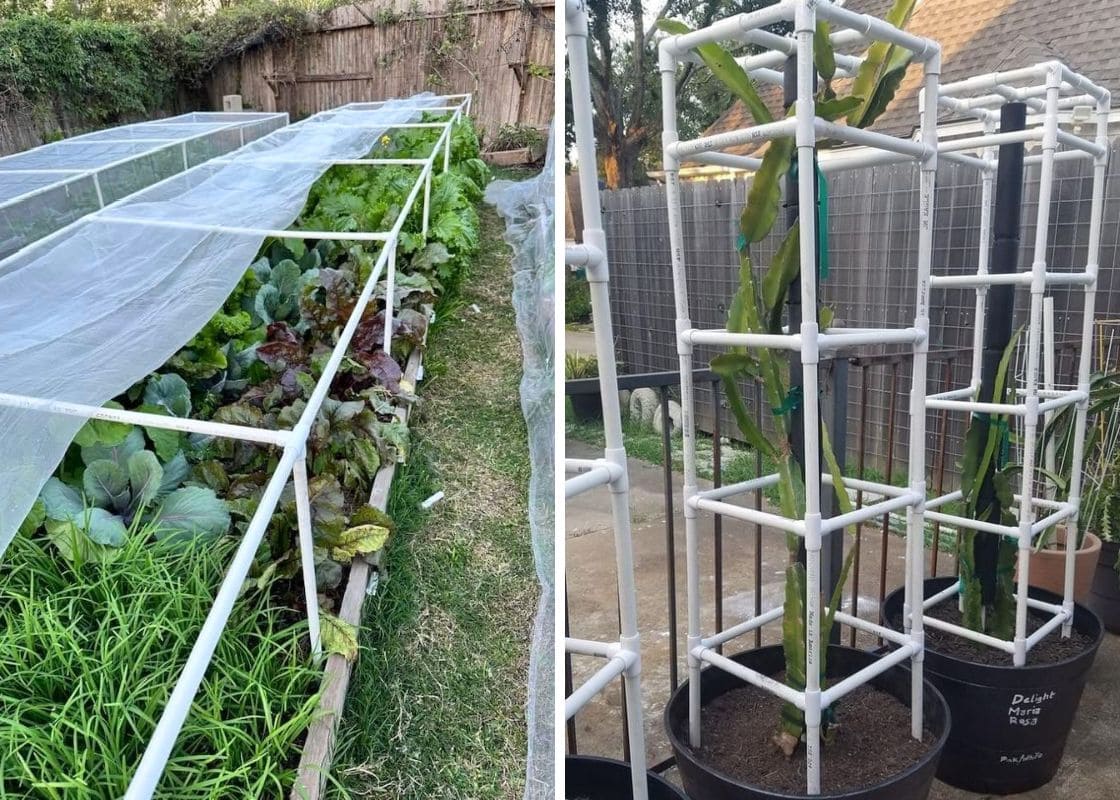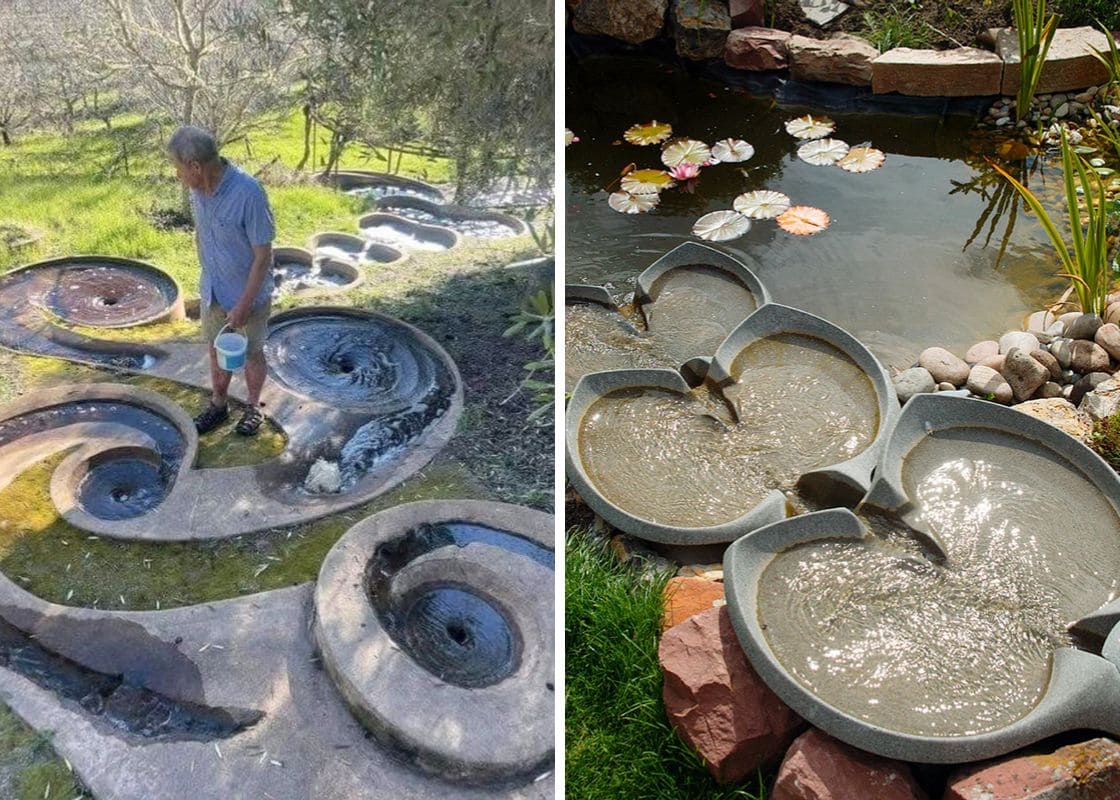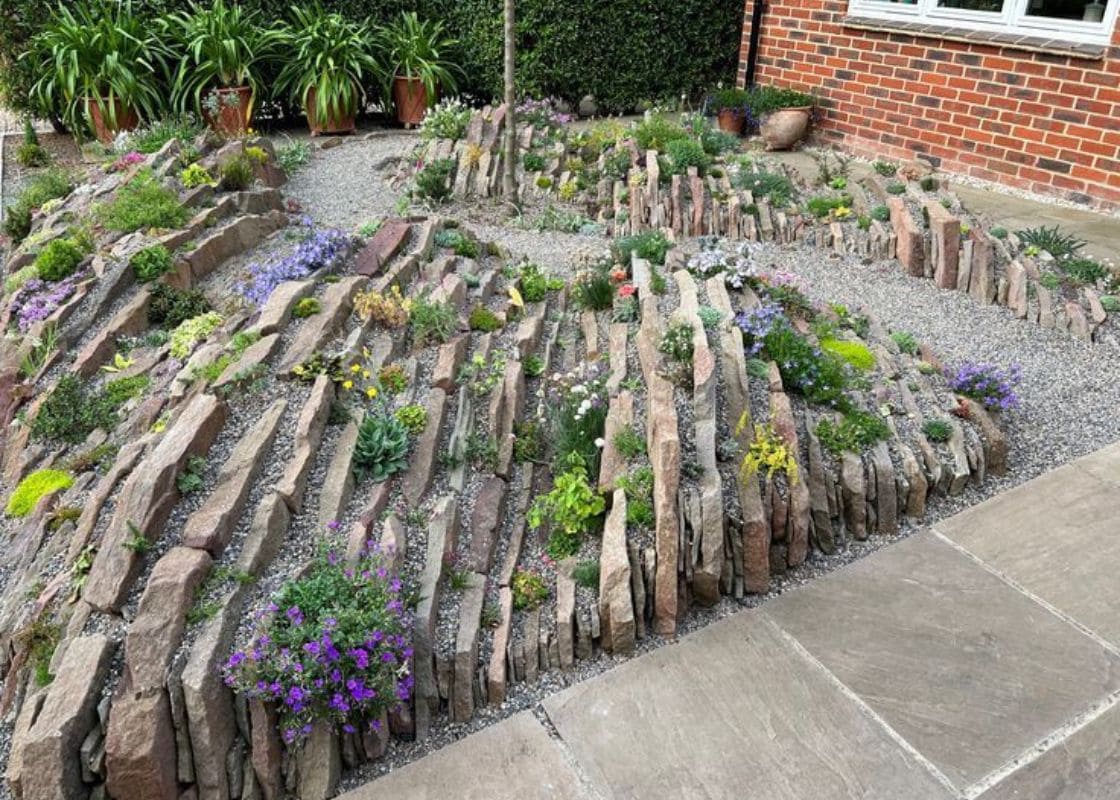Sunflowers with their vibrant yellow petals and towering stems are often a beloved sight in gardens and fields.
However, nature has a way of creating doppelgängers, and many weeds closely mimic the cheerful appearance of sunflowers.
While these weeds can pose challenges for gardeners; they also bring many benefits to humans and ecosystems.

Jerusalem Artichoke (Helianthus tuberosus)
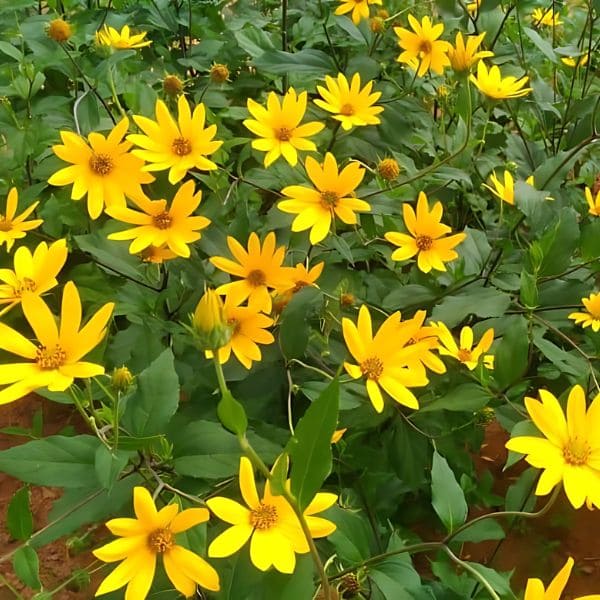
Jerusalem artichoke is a perennial herb that boasts tall, sturdy stems adorned with bright yellow, daisy-like flowers.
Originating from North America, it can reach heights of 6-10 feet and thrive in temperate regions such as in fields, along roadsides, and in the wild.
Jerusalem artichoke owns edible tubers, called sunchokes. They are rich in inulin, a type of fiber that acts as a prebiotic, promoting healthy gut bacteria.
Oxeye Daisy (Leucanthemum vulgare)
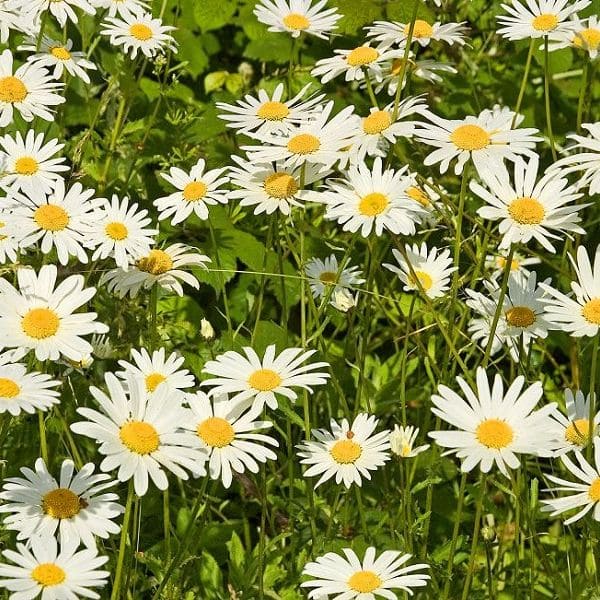
Oxeye Daisy has white petals encircling a sunny yellow center. Native to Europe and Asia, the Oxeye Daisy grows in meadows, grasslands, and along roadsides.
While its blooms attract pollinators like bees and butterflies, its invasive nature can disrupt local ecosystems.
Typically, natural landscapes managers use manual removal, mowing before seed set, and the use of herbicides to control its spread.
Despite its weedy tendencies, the young leaves can be added to salads, and the flower heads make a delicate tea to dry out any mucus if you have coughing symptoms.
Yellow Salsify (Tragopogon dubius)
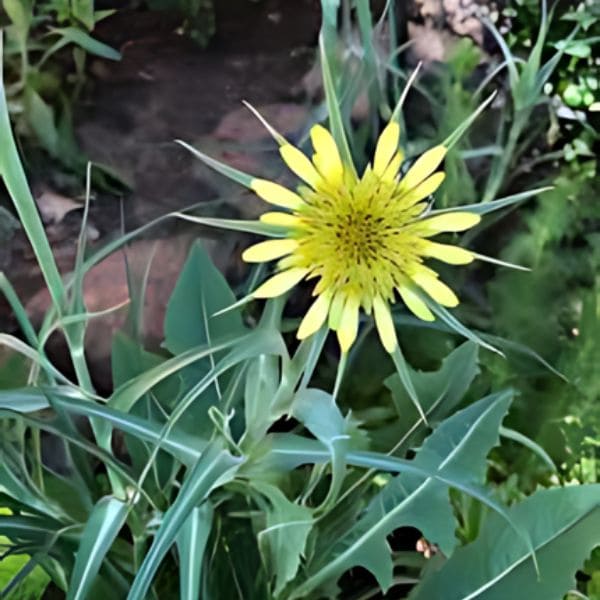
Yellow salsify is a biennial herb boasting long, grass-like leaves and large, dandelion-like flowers that can reach up to 2 inches in diameter.
The flower’s stems can grow up to 3 feet tall and its heads open in the morning and close by afternoon and.
Yellow salsify is native to Europe and Asia and it has spread across North America, thriving from fields and meadows to roadsides and waste areas.
Despite its weedy nature, yellow salsify’s roots are edible and were once a popular vegetable in Europe, known as “poor man’s asparagus” due to their similar taste.
Also, people believe that if you make a wish on its seed head, your wish will come true.
Dandelion (Taraxacum officinale)

The dandelion is a perennial herb that has deeply toothed leaves that form a rosette at the base, and its iconic yellow flowers are made up of numerous tiny florets.
Each flower head sits atop a hollow stem, and when it matures, it transforms into a fluffy seed head that children love to blow on.
Besides, they provide early spring nectar for bees and other pollinators. However, many gardeners have to use herbicides to control their vigorous growth.
Despite being labeled a weed, the dandelion owns leaves that are rich in vitamins A, C, and K. The roots are often used in herbal teas to support liver health.
Wild Sunflower (Helianthus annuus)

The wild sunflower has multiple flower heads on a single stem, each with yellow petals and a dark center.
These flowers can reach up to 10 feet tall, and their rough, hairy leaves are broadly ovate and arranged alternately along the stem.
Wild sunflowers are native to North America and thrive in open fields, prairies, and along roadsides.
Besides, they provide nectar for bees, butterflies, and other insects. They also produce seeds that are a crucial food source for birds and small mammals.
However, in agricultural settings, wild sunflowers can become a nuisance competing with crops for resources.
To manage their spread, gardeners can apply techniques such as regular weeding, mowing, and herbicide use.
Black-eyed Susan (Rudbeckia hirta)
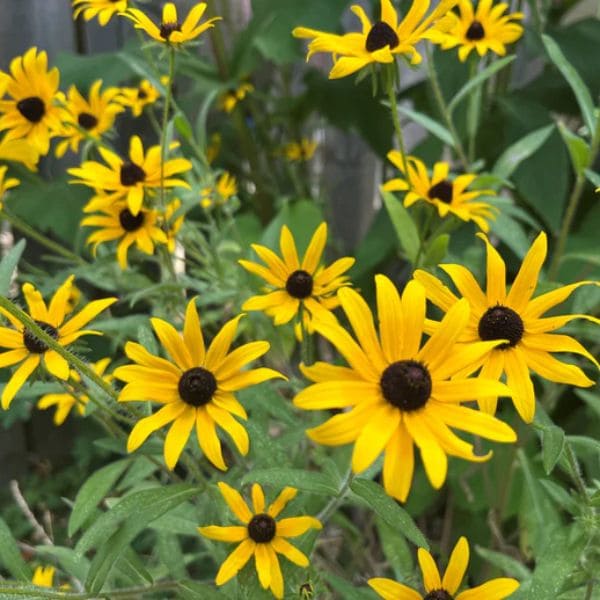
Black-eyed susan has vibrant yellow petals that radiate around a dark brown or black center giving it the distinctive “black eye.”
These flowers can grow up to 3 feet tall, with hairy, lance-shaped leaves.
They prefer full sun and can be tolerant of various soil types. Ecologically, they play a crucial role in supporting pollinators such as bees and butterflies.
If you’re dealing with an overabundance of Black-eyed susans in the garden, regular deadheading, or removing spent flowers can prevent them from self-seeding excessively.
Despite their reputation as a weed, black-eyed susans add beauty to floral arrangements. In native American lore, they were often used to treat colds and infections.
Beggarticks (Bidens alba)
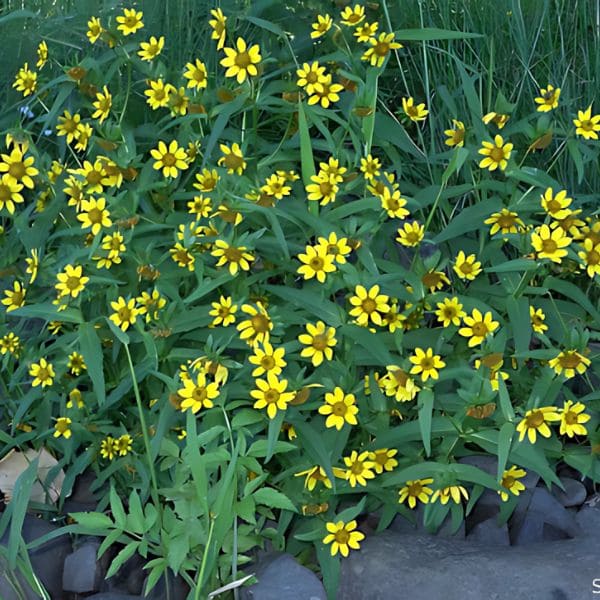
Beggarticks feature white petals surrounding a yellow center, also some varieties may have yellow petals, resembling miniature sunflowers.
The plant can grow up to 4 feet tall, with slender, toothed leaves.
You’ll often find beggarticks thriving in wetlands, along riverbanks, and in other moist areas, particularly in the southeastern United States and Central America.
Ecologically, beggarticks provide nectar for pollinators like bees and butterflies. They also play a role in soil stabilization, preventing erosion in their native habitats.
However, if you find beggarticks becoming a nuisance, regular weeding as their seeds are notorious for sticking to clothing and animal fur aiding their spread.
Groundsel (Senecio vulgaris)
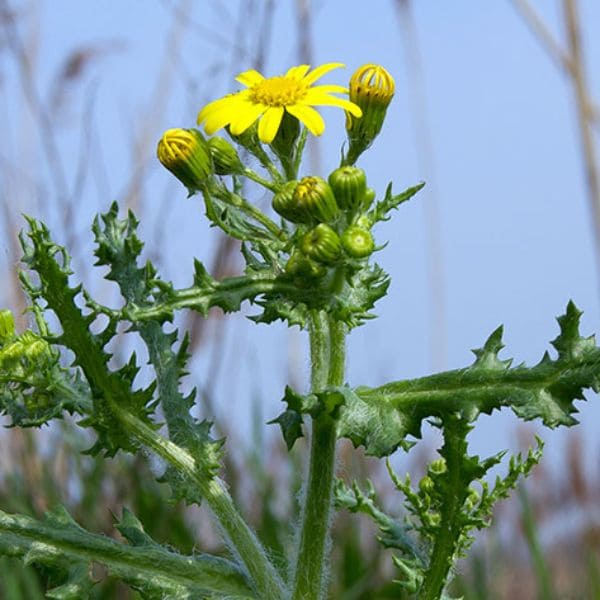
Groundsel has small yellow tubular flowers that cluster together forming a flower head that resembles a miniature sunflower.
This annual herb typically reaches heights of 10 to 18 inches with deeply lobed leaves that are soft and hairy to the touch.
You can find groundsel in gardens, fields, and disturbed areas worldwide. It thrives in temperate climates and is common in Europe, Asia, and North America.
While it provides nectar for insects, its invasive nature can disrupt local plant communities.
Traditionally, groundsel was used to treat skin. However, this plant contains toxic alkaloids, specifically pyrrolizidine alkaloids causing liver cirrhosis and cancer in humans.
Elecampane (Inula helenium)
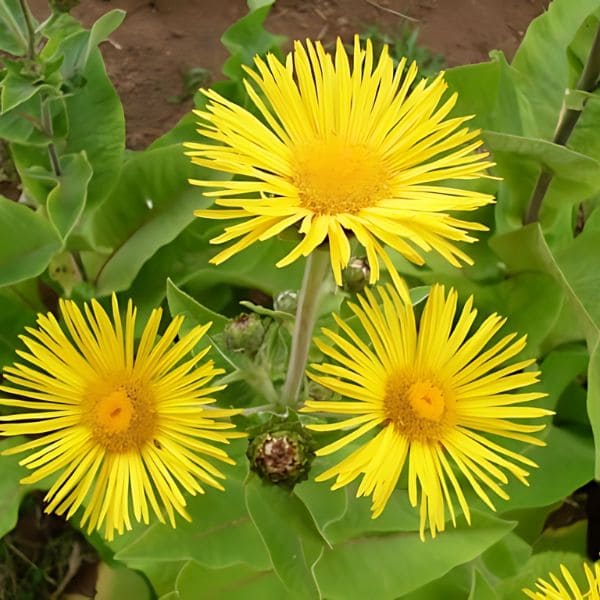
Elecampane owns flowers which can be up to 4 inches across and feature numerous yellow slender petals surrounding a prominent central disk.
The plant can reach heights of 3 to 6 feet and its leaves are large, ovate, and covered with a rough, hairy texture.
You can find elecampane in moist, well-drained soils across Europe and Asia. It has also naturalized in parts of North America.
In addition, elecampane’s roots contain inulin, a type of prebiotic fiber, they are used in traditional remedies for respiratory conditions, digestive issues, and as a general tonic.
Historically, it was even used in confectionery, known as “elecampane lozenges,” for soothing sore throats.
Mexican Sunflower (Tithonia rotundifolia)
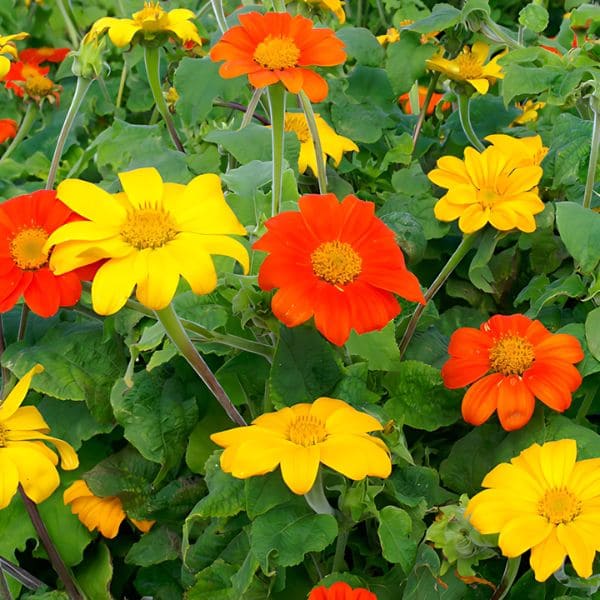
Mexican sunflowers which can reach up to 3 inches in diameter are typically a brilliant orange, yellow or red.
The plant often grows between 4 to 6 feet, with broad, ovate leaves that have a slightly hairy texture.
They prefer well-drained soils and full sun and become a popular choice for gardens in temperate to tropical regions.
If you’re considering growing Mexican sunflowers, it’s good to know they are not typically invasive, but they do self-seed readily.
While Mexican sunflowers are not edible they can add a splash of color to gardens and can be used in cut flower arrangements.
Blanket Flower (Gaillardia pulchella)
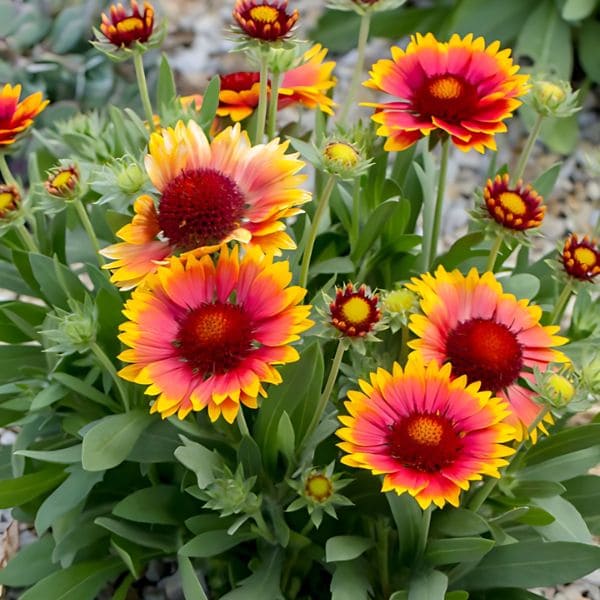
The blanket flowers are a mix of red, orange, and yellow with a gradient effect that makes them look as though they are on fire.
These flowers can grow up to 3 inches in diameter, and the plant reaches heights of about 1 to 2 feet. The leaves are lance-shaped and slightly hairy.
You’ll see blanket flowers thriving in sunny, well-drained areas across North America, particularly in prairies and along roadsides.
They are able to withstand drought conditions making them a popular choice for xeriscaping.
Interestingly, the name “Blanket Flower” itself is derived from the flower’s resemblance to the colorful patterns of traditional Native American blankets.
Tickseed (Coreopsis lanceolata)
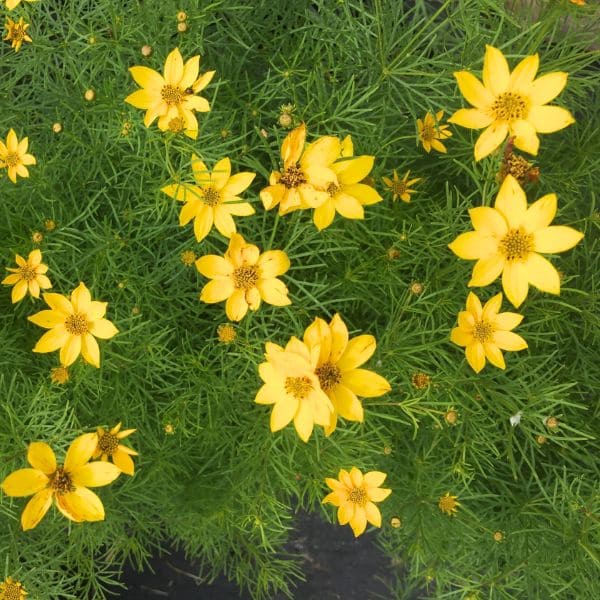
Tickseed flowers which measure about 2 inches across have a striking resemblance to sunflowers with their rounded petals and prominent centers.
The plant typically grows to a height of 1 to 2 feet, and its leaves are narrow and lance-shaped giving a delicate appearance.
In the natural world, tickseed is significant for its role in supporting pollinators as bees, butterflies, and other beneficial insects.
If tickseed becomes too prolific in your garden, regular deadhead to prevent it from self-seeding excessively, and weed occasionally to keep it in check.
Moreover, tickseed is primarily ornamental. Its long-lasting blooms are perfect for brightening up gardens and making beautiful cut flowers.
Coneflower (Echinacea purpurea)
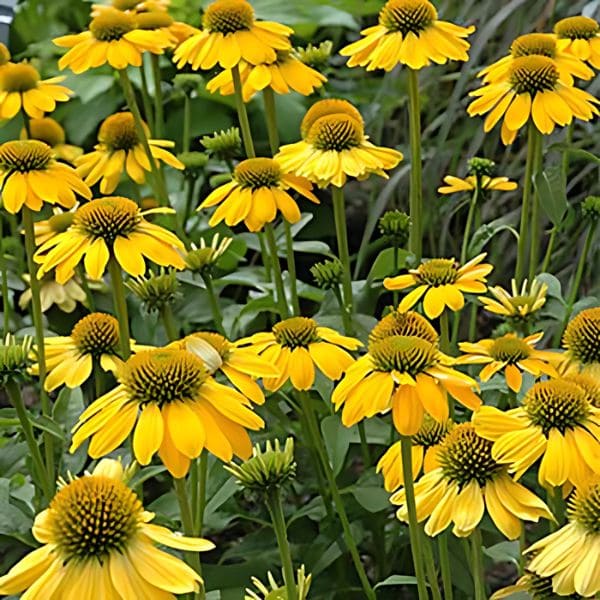
Coneflowers feature striking purple, pink or yellow petals that radiate from a spiny, cone-shaped center.
Typically, coneflowers can reach heights of 2 to 5 feet, and their leaves are dark green, lance-shaped, and slightly coarse to the touch.
Coneflowers flourish in prairies, open woodlands, and gardens across North America. They prefer well-drained soils and full sun but are also remarkably drought-tolerant.
Ecologically, coneflowers provide nectar for a variety of pollinators, including bees, butterflies, and hummingbirds, and their seeds are a food source for birds in the fall.
Apart from ornamental value; coneflowers have been used for centuries in herbal medicine to boost the immune system and treat colds and infections.
Wingstem (Verbesina alternifolia)
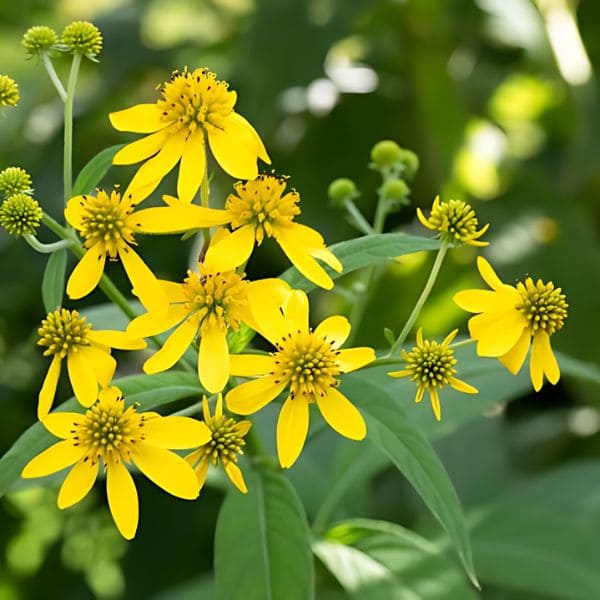
Wingstem featuring numerous narrow petals around a central disk can grow up to 3 inches in diameter.
The plant can reach impressive heights of 6 to 8 feet, with distinctive “winged” stems that have flanges running along their length. Its leaves are long, lance-shaped, and arranged alternately on the stem.
Wingstem lives in moist environments such as wetlands, along stream banks, and in floodplain forests throughout the eastern United States.
It thrives in rich, well-drained soils and full to partial sunlight. Ecologically, wingstem often supports pollinators, particularly bees and butterflies.
Additionally, native American tribes utilized it to treat respiratory issues, fevers, and inflammation.
The leaves and roots were made into poultices or teas for medicinal use. It’s also a favorite among naturalists for creating habitats that support diverse wildlife.


